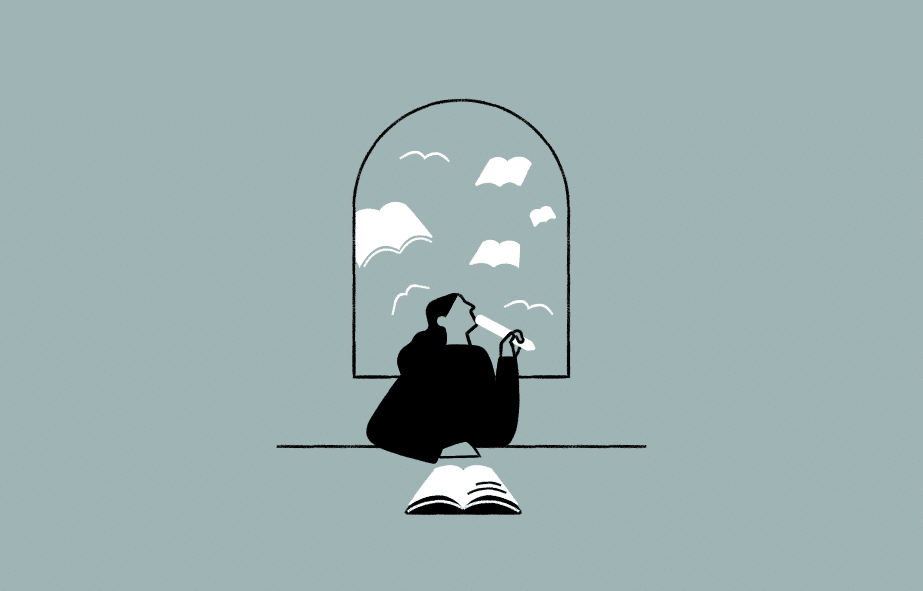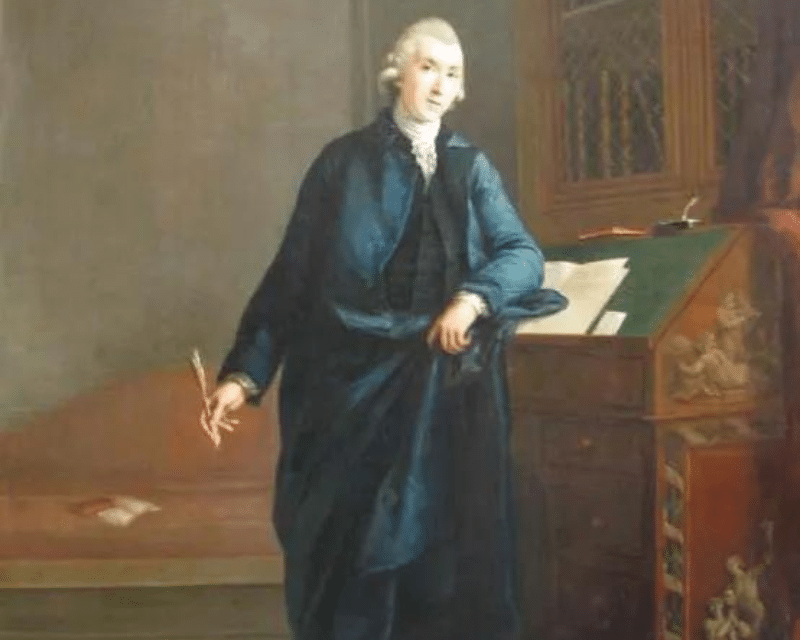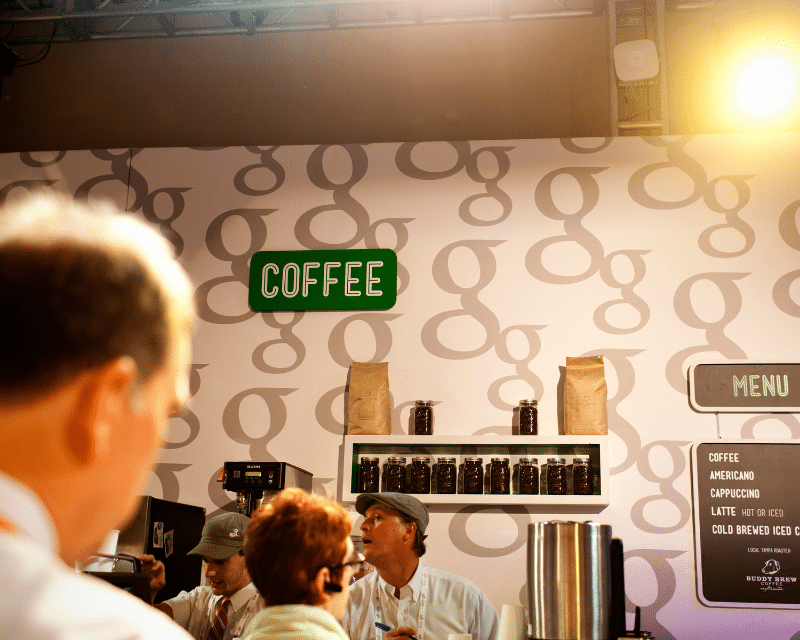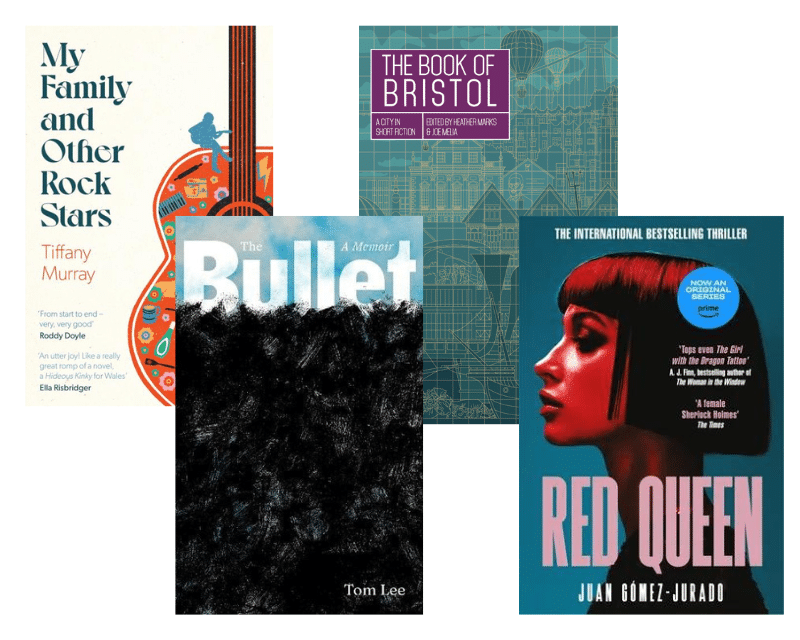- Collected
- Article
There’s An Art To It
Adventures in the ekphrastic

- 12 December, 2022
- Mark Blayney
Not so long ago I was in a murkily lit cellar, or was it a grungy bar, or perhaps it was an open day at a prison. I can’t remember the details, but there was a painting on the wall that struck me. It had rolled-up banknotes in it, and some sort of watercolour spinning top, and a splash of colour that could have been a skirt or an explosion or a poorly positioned tablecloth. A few minutes later, I’d written a poem in the notebook that I (usually) remember to carry around for occasions such as these.
What was going on here? How did I go from cheerfully minding my own business one minute to responding in words to someone else’s artwork the next? Do some images work better than others as a source of inspiration? Was this the World’s Answer to Writers’ Block? (If so, let me patent it before you tell anyone else).
Let me paint a picture for you about this. Or rather — come and look at some paintings with me. There you are. Do you like them? What can you see? This one’s a landscape. Look how the artist keeps the colour palette to a minimum. And here’s a portrait of someone who did something amazing but is better known for something else. And over here – that’s it, turn round, step over here – is an abstract, but what’s going on down there? What’s that in the corner? What’s that shadowy background figure holding?
Now Mark, you might say at this point, your voice echoing in the airy white room, our footsteps audible on the sprung wooden floor — why are you talking about paintings when you’re a writer? Well, I want to reply: ekphrastic. If that sounds Greek to you, it is – bear with me.
If you’re not a writer, but you want to know how writers’ brains tick, look at a picture and start writing about it. If you are a writer and you haven’t tried this, it’s worth experimenting; the effects can be wide-ranging. Word-peddlers who consider themselves non-poets find poems appearing. Poets who think they don’t write prose end up with short stories. We find rabbit holes of imagination that we didn’t know were there. It’s an enjoyable exercise in itself but has surprising and satisfying benefits. What happens if these people walk into the story? What’s that obscure detail, from which a plot twist could emerge? Who was standing just to the right of the frame, who we now can’t see?
Artists and actors always have some raw material to play with — they have a view, or a subject, or a script. It seems an unfair advantage to me, when I’m chewing an unwilling pen. (Although of course, the grass is always greener. Artists probably wish they didn’t need to spend money on materials. And I’m sure actors would love to be able to work wherever and whenever they want, as writers can, without needing to traipse off to auditions.)
I can’t speak for other writers but for me, some paintings work much better than others. Murky Dutch canvases from the seventeenth century are an obvious starting point, as are Post-Impressionists. And the surreal – de Chirico, Leonor Fini, Man Ray – come with a guarantee of effectiveness. Effectiveness meaning, I will write something. I won’t necessarily understand it, or like it. But I will respond to it.
There are some fine examples of literary works driven by paintings. Donna Tartt’s protagonist in The Goldfinch holds onto Fabritius’s painting as a talisman to keep his mother close. Iris Murdoch’s The Green Knight uses the Rembrandt painting of The Polish Rider as a starting point for her meditation on (as the chapter headings have it) justice, mercy and eros. And Alan Bennett wrote the sublime A Question of Attribution, in which x-raying Titian’s Allegory of Prudence reveals a shadowy, hidden fourth figure…just as the painting’s conservator Anthony Blunt is revealed as the ‘Fourth Man’ from the Cambridge spy ring.
The most well-known is, I suppose, Tracy Chevalier’s Girl with a Pearl Earring, inspired by the Vermeer painting of the same name. So little was known about Vermeer, and precisely zero about the pearl-clad Girl, that Chevalier at the time of the novel’s writing was able to give free rein to her imagination and no one could complain that it was wrong. Chevalier could have had the earring falling out of a spaceship, and no one would have been able to prove it didn’t happen. (For clarity, this is not what takes place in the book).
For me, the point of the exercise – the value of it – is it diverts something in the brain and makes me approach things differently. It’s a workout for the mind, that makes me think sideways and diagonally — but it’s not a chore, it’s enjoyable. Ali Smith’s How to be both takes the literal split of del Cossa’s Month of March fresco and structures the novel accordingly. So even if I don’t respond to the picture that’s in front of me, I ask myself — why has it been done like that? Why did the artist choose that frame? Did someone else choose the frame later — would the artist like it? Why the thick paint? What’s the ‘moment under the moment,’ as Russell Hoban would have it? We could get our story from a square inch, closely examined.
The definition of ekphrasis can include any kind of visual art, not just paintings. Once my notebook fills, I start looking at sculptures as well. Twenty years ago, I found myself mesmerised in the gardens at Barbara Hepworth’s house in St Ives. I knew a story was on its way when I pottered round her conservatory and saw rather a lot of cacti. Those wide flat leaves with spikes…and some with holes in them…yes, these were her inspiration, I thought! Perhaps I got this completely wrong — perhaps the cacti were put there later, because they reminded someone of the sculptures. It doesn’t matter. I got my story.
Anyway, in the garden one of the monumental sculptures was a square/circle/cube concoction called Four-Square (Walk-Through). So — I walked through it. I don’t think I was supposed to (from the gallery’s point of view, rather than Hepworth’s). It felt, you could fancifully state, like being re-birthed. Somewhat mystically – as tends to happen in Cornwall – I felt different on the other side than I did before going in.
I named the resulting book after another of the sculptures – Conversations with Magic Stones. When I published it, I began to regret the title. Someone from the distributor rang me up and said – ‘is this Mind Body Spirit?’ ‘Er no’, I said — ‘it’s short stories’. There was silence worthy of Pinter at the other end. ‘Well…’ I said optimistically, ‘if you think it will sell more, by all means put it in that category… Hello?’
Later I wrote a short, simple poem based on a work by Irish artist Aidan Flanagan, and it was published in an anthology. When I saw more of his works, I loved them so much I carried on writing short, simple poems about them and before long had a book’s worth. This has been a hard sell as well — after all, what poetry publisher wants to take on a book that needs illustrations on every other page, ideally in colour? But – this is the important bit – it has been a thoroughly enjoyable, satisfying experience. Maybe I’ll print a dozen glossy copies myself and send one to Aidan. I hope he likes it.
At the moment, I’m enjoying trying the ekphrastic with my eight-year-old son. We go to the museum in Cardiff, sit in front of a painting, and start writing whatever comes into our heads. Being eight, he’s creative with the rules. The other day he was facing one of Monet’s Houses of Parliament silhouettes and turned it into a fluorescent, abstract outline-amongst-colours. ‘This is easy,’ he murmured. ‘What about the story?’ I asked. He was too absorbed in drawing it to answer.
I would enthusiastically recommend this practice to anyone who wants to try something different this weekend, or perhaps tomorrow, or perhaps the moment you stop reading this. If you haven’t made the acquaintance of this game yet, go to your nearest art gallery, or the graffiti round the corner, or open a Sunday magazine supplement — and become best friends. I’ll see you there.
You might also like:
The Life and Times of Reverend David Williams
As we get ready to celebrate our 234th anniversary on 18 May, a recent RLF grant beneficiary takes a deep…
Anywhere But a Room of One’s Own
I am a writer looking to be re-homed. All I need is a laptop, a table and a chair, and…
RLF Fellows’ News: May 2024
Publishing RLF Fellow Tom Lee’s new book, The Bullet, his memoir about family and mental health, has recently been published…


